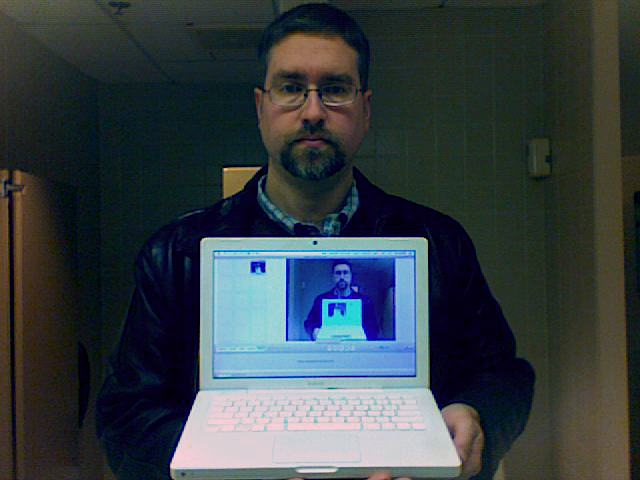Well, it finally happened: a friend showed me his new iPad, and I lived to tell the tale.
As I indicated in this post a few weeks ago, Apple’s recent refresh of its game-changing tablet computer struck me as something less than overwhelming — an incremental step rather than a quantum leap. Though I haven’t changed my position, I should clarify that I remain a committed iPad user and Apple enthusiast; I don’t expect miracles at every product announcement, any more than I expect every word out of my own mouth (or post on this blog) to be immortal wisdom. It’s OK for the company to tread water for a while, especially in the wake of losing Steve Jobs.
I’ve been reading Walter Isaacson’s biography of Jobs, flipping through that white slab of a book (obviously styled as a kind of print analog of an iPod) to my favorite chapters of Jobs’s history: his garage collaboration with Steve Wozniak in the mid-70s on the first Apple computer, in its cheeky wooden case; shepherding the first Macintosh to market in the early 1980s; his series of home runs twenty years later, helping to develop first iTunes and then the iPod as part of a rethinking of the personal computer as a “digital hub” for local ecosystems of smart, small, simple devices for capturing and playing back media.
It’s a modern mythology, with Jobs as an information-age Odysseus, somehow always seeing further than the people around him, taking us with him on his journey from one island of insight and inspiration to another. His death threatens to leave Apple rudderless, and the gently-revised iPad seems to me an understandable response to the fear of drifting off course. Too dramatic a correction at this point might well strand the company or distract it into losing its way entirely, and for a business so predicated on its confident mapping of the future — its navigation of nextness — that outcome is unthinkable.
The flipside, of course, is stagnation through staying the course, death by a thousand cautious shortcuts. Apple’s solution to the dilemma is symptomatized in the new iPad’s Retina display, the highest-resolution screen ever created for a mobile device. It’s hard not to intepret this almost ridiculously advanced visualization surface as a metaphor for the company’s (and our own) neurotic desire to “see” its way forward, boosting pixels and GPU cycles in an effort to scry, on a more abstract level, the ineffable quality that Steve Jobs brought to just about everything he did, summarized in that tired yet resilient word vision. We stroke the oracular glass in hopes of resolving our own future.
As in Greek tragedy, of course, such prophetic magic rarely comes without costs. The new iPad’s demanding optics send fiery currents surging through its runic circuitry, raising the device’s heat to levels that some find uncomfortable, though as Daedalus learned, sometimes you have to fly close to the sun. Hungry for power, the iPad takes a long time to charge, and doesn’t always come clean about its appetites, but who is to say if this is a bug or a feature? Not us mere mortals.
What I most worried about was looking upon the iPad’s Retina display and being forever ruined — turned to stone by the gorgon’s gaze. It happened before with the introduction of DVD, which made videocassette imagery look like bad porn; with Blu-Ray, which gave DVDs the sad glamour of fading starlets in soft-focus closeups; with HDTV, which in its dialectical coining of “standard def” (how condescendingly dismissive that phrase, the video equivalent of “she’s got a great personality”) jerrymandered my hundreds of channels into a good side and bad side of town. I was afraid that one glimpse of the new iPad would make the old iPad look sick.
But it didn’t, and for that I count myself lucky: spared for at least one more year, one more cycle of improvements. But already I can feel the pressure building, the groundwork being laid. As one by one my apps signal that they need updating to raise themselves to the level of the enhanced display’s capabilities, I imagine that I myself will one day awaken with a small circular push notification emblazoned on my forehead: ready to download an upgraded I.





